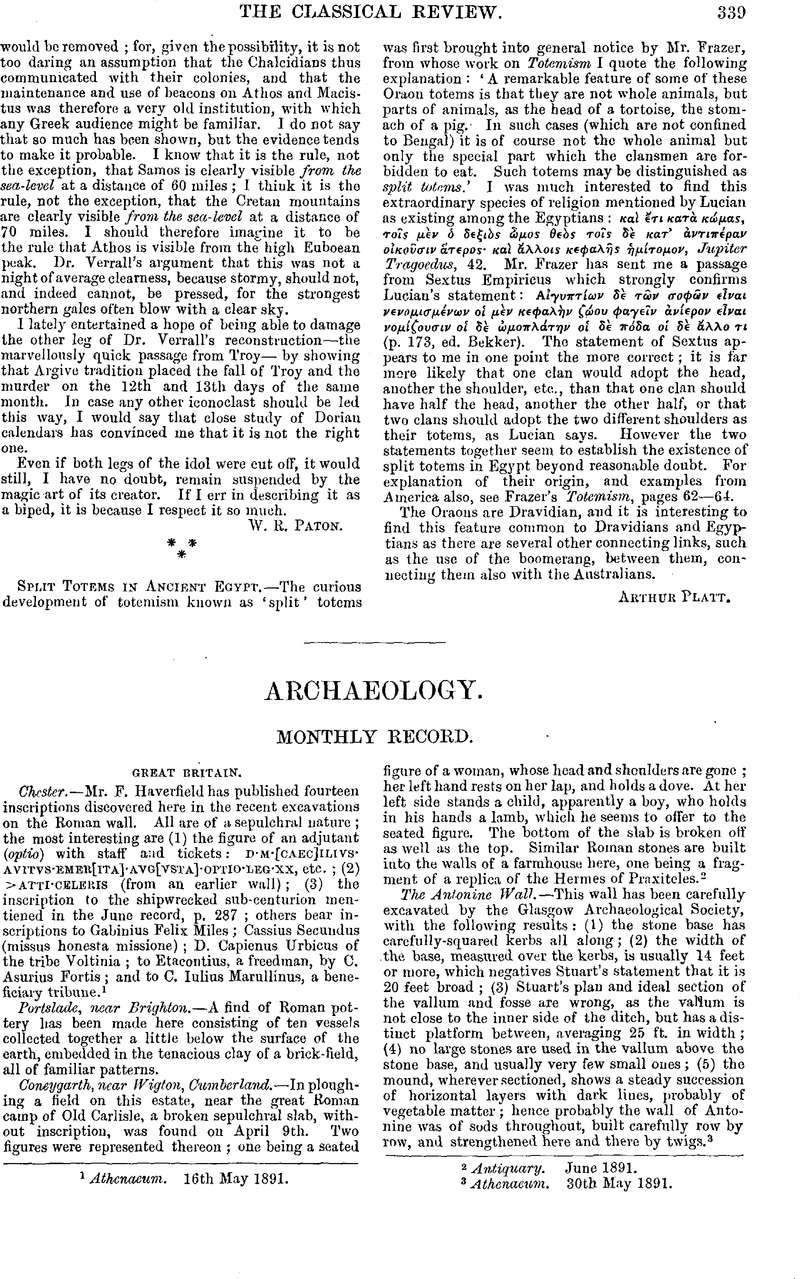No CrossRef data available.
Published online by Cambridge University Press: 27 October 2009

page 339 note 1 Athenaeum. 16th May 1891.
page 339 note 2 Antiquary. June 1891.
page 339 note 3 Athenaeum. 30th May 1891.
page 340 note 1 Standard, June 1891.
page 340 note 2 Athenaeum, 30th May 1891.
page 340 note 3 Bull. Comm. Arch. Marz e Apr. 1891.
page 340 note 4 Berl. Phil. Woch. 23 May 1891.
page 341 note 1 δ⋯λτιον, Jan.—March 1891.
page 341 note 2 δ⋯λτιον, Nov.—Dec. 1890.
3 Berl. Phil. Woch., 9 May 1891.
4 Athenaeum, 16 May 1891.
5 Berl. Phil. Woch., 23 May 1891.
page 343 note 1 The description given ibid, is obviously inaccurate in describing the figures on the Corinthian capital surmounting this pin as ‘goats’; they are quite clearly bulls. The doves do not drink out of the ‘cups’; and the ‘large bead of Egyptian porcelain’ is a pearl.
page 343 note 2 The four crouching bulls which project from the outer surface of the S.E. wall of the Herobn at Gjöbaschi are an earlier instance; though they are placed immediately under the coping of the wall, they suggest no structural supporting function, and may perhaps be referred rather to the projecting lions, horses, &c, of Lycian gable tombs. It is noticeable that they are winged, whereas at Delos and in the Persepolitan columns the figures are wingless. Perhaps the winged type may have been due to general Mesopotamian influence; while the wingless bull capital was ddistinctively Persian. Latterly the wings came to be added to the capital also, as at Salamis.
page 344 note 1 Cf. Kawerau in Baumeister's Denkmäler, pp. 1730 scq.
page 344 note 2 Classical Review, p. 285 (June).